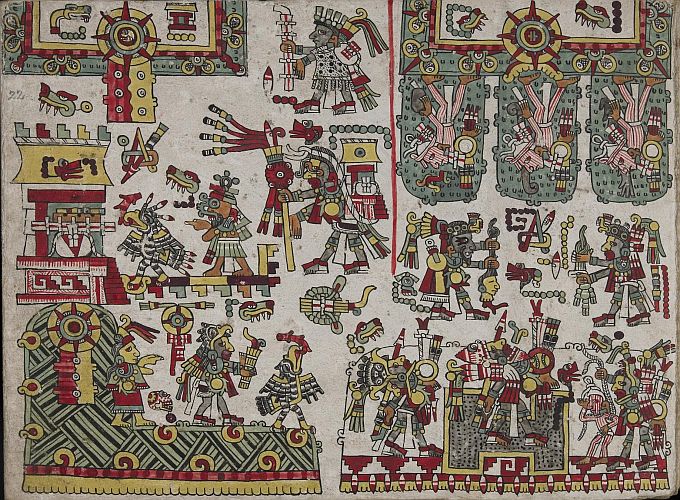The subproject focuses on the graphic communication system of the historical and divinatory Mesoamerican manuscripts, commonly called codices in the scholarship.
Mixtec pre-Hispanic codices tell the accounts of the local ruling dynasties and are characterized by a narrative construction, manifested mainly in the spatial organization of content. Divinatory codices were sacred books that served as the principal media to determine what divine forces shaped particular periods of time, thus making them favorable or not for certain activities.

These documents have been studied so far by a whole constellation of important researchers who developed and adopted different approaches In our project, primarily the recent philological-cognitive method by Mikulska (2008, 2015) and Dehouve (i.e. 2009, 2018) will be applied with the aim to:
- investigate how the GCSs applied in Mixtec historical codices and divinatory codices codify and create meaning, both on the level of a sign and of bigger graphic clusters (including whole pages as another unit of meaning),
- examine what graphic (notational) strategies are applied at the structural level to create the effect of narration in the Mixtec historical codices and parts of divinatory ones,
- confront the theories of writing and literacy with central Mesoamerican GCS which do not meet the classic narrow definition of writing but possess a syntax and is clearly capable of codifying narrative.

(source: https://www.britishmuseum.org/collection/object/E_Am1902-0308-1)


